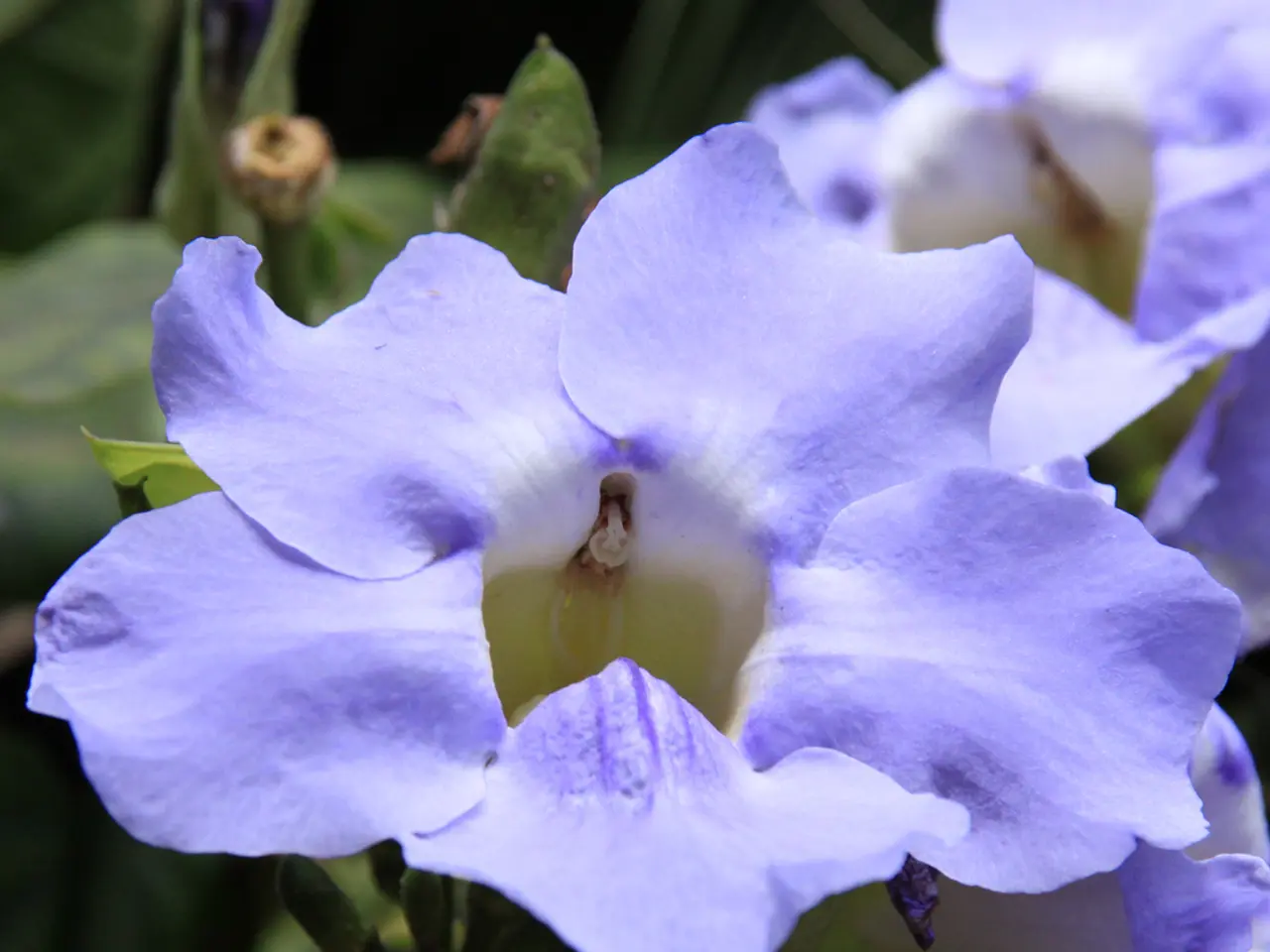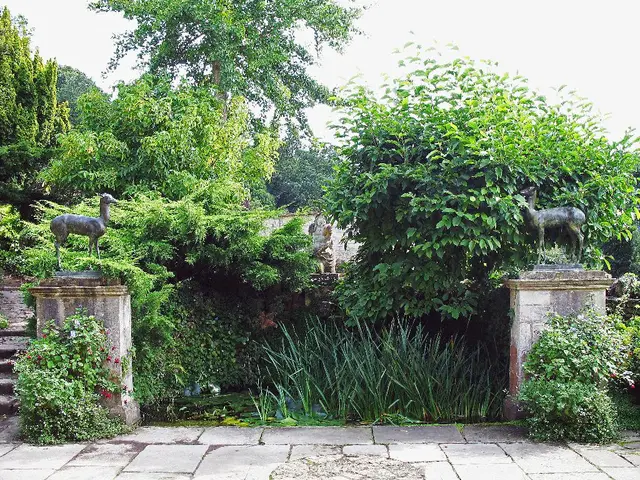Guide for nurturing Sedum plants: Strategies for cultivating stonecrops to create durable ground cover and vivid color
Sedums, with their low-maintenance nature and versatility, make ideal plants for various garden settings. These hardy perennials can thrive in a range of conditions, from rock gardens and gravel gardens to flower beds and perennial borders.
Rock Garden Sedums
Rock garden sedums are small, low-growing varieties that are perfect for rock gardens, gravel gardens, green roofs, raised beds, and small containers. Some popular examples include Sedum 'Angelina', Sedum 'Ruby Glow', and Sedum hispanicum (Spanish Stonecrop). These sedums are drought-tolerant and can survive in poor soil, making them ideal for dry, sun-exposed rock garden conditions.
These sedums typically grow up to a few inches to about 1 foot tall and root easily from stems touching soil. They prefer well-drained soil and full sun, and their spreading habit makes them excellent for covering stones and gravel.
Flower Garden Sedums
Flower garden sedums, derived mainly from Sedum spectabile and Sedum telephium, are taller perennials, often reaching up to 2 feet or more. These sedums bloom mainly in late summer to fall, providing nectar for pollinators and vibrant color when many other plants are fading. Examples of flower garden sedums include Sedum telephium 'Purple Emperor' and Sedum telephium 'Matrona'.
These sedums require staking or support as the flower heads become heavy. They also prefer well-drained garden beds and full sun.
Comparison: Rock Garden vs Flower Garden
| Feature | Rock Garden Sedums | Flower Garden Sedums | |---------------------|-------------------------------------------------------|--------------------------------------------------------| | Height | Very low, from 2-12 inches | Taller, up to 2 feet or more | | Growth Habit | Spreading, groundcover or tight cushions | Upright clumps with flower stems | | Flowering Season | Mostly spring flowering; some late | Mainly summer to fall flowering | | Soil & Exposure | Well-drained, poor soils; full sun | Well-drained garden beds; full sun | | Maintenance | Low, drought tolerant, minimal support needed | May require staking due to heavy flower heads | | Use | Edges, crevices, troughs, green roofs, groundcover | Perennial borders, flower beds, pollinator gardens | | Examples | ‘Angelina’, ‘Ruby Glow’, Sedum hispanicum | Sedum spectabile, Sedum telephium ‘Purple Emperor’ |
General Care and Tips
Sedums do not usually need lifting and dividing every few years to ensure that they retain their vigor. When planting sedums, it's important not to plant too shallowly or too deeply, and setting the crown a little below the soil level is best.
Most sedum plants will grow naturally in dry climates and dry situations, making them perfect for low rainfall areas, dry gardens, and xeriscaping projects. Deterrent sprays or a fence can help protect sedums from deer. Annual mulching of gravel is beneficial for both rock garden sedums and hardy perennial flower garden sedums, particularly in drought gardens.
Common Problems and Solutions
Sedums are generally hardy plants, but problems such as mildew and rotting at the crown are usually caused by the soil being too wet. To avoid these issues, ensure your sedums are planted in well-drained soil. Unlike many plants, sedums are unhappy in rich, fertile soil and when overfed. These conditions encourage soft and leafy stems that collapse under the weight of flowers or in a rainstorm.
Conclusion
Whether you're looking to create a modern rock garden, a vibrant flower bed, or a pollinator-friendly border, sedum plants offer a wide range of options. With their drought tolerance, low maintenance, and aesthetic appeal, these hardy perennials are an excellent choice for any garden.
- Incorporating succulents like rock garden sedums can be an innovative idea for your home-and-garden lifestyle, creating a unique display in raised beds or small containers.
- For a burst of color in your garden, consider planting flower garden sedums, such as Sedum telephium 'Purple Emperor' or 'Matrona', in your flower beds or perennial borders, providing nectar for pollinators during late summer to fall.
- To add a natural touch to your lifestyle while still achieving a well-kept garden, consider combining rock garden sedums for stone and gravel cover in rock gardens and gravel gardens with flower garden sedums in flower beds and perennial borders.



